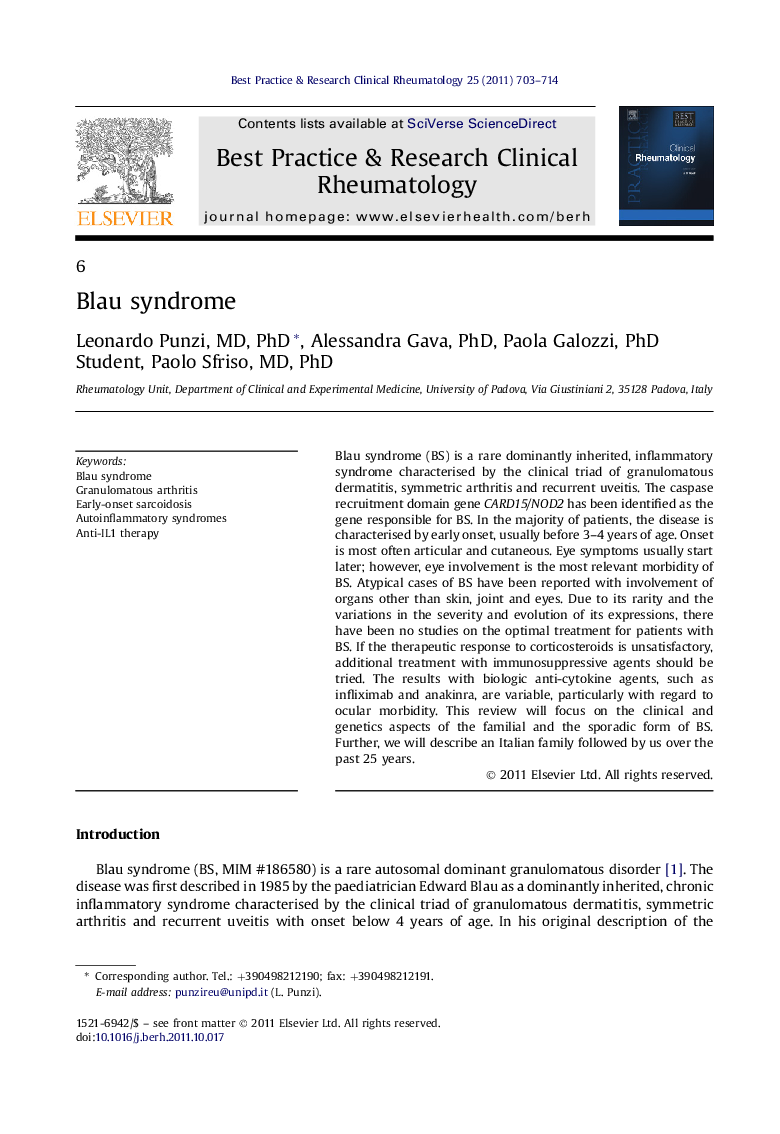| Article ID | Journal | Published Year | Pages | File Type |
|---|---|---|---|---|
| 3343196 | Best Practice & Research Clinical Rheumatology | 2011 | 12 Pages |
Blau syndrome (BS) is a rare dominantly inherited, inflammatory syndrome characterised by the clinical triad of granulomatous dermatitis, symmetric arthritis and recurrent uveitis. The caspase recruitment domain gene CARD15/NOD2 has been identified as the gene responsible for BS. In the majority of patients, the disease is characterised by early onset, usually before 3–4 years of age. Onset is most often articular and cutaneous. Eye symptoms usually start later; however, eye involvement is the most relevant morbidity of BS. Atypical cases of BS have been reported with involvement of organs other than skin, joint and eyes. Due to its rarity and the variations in the severity and evolution of its expressions, there have been no studies on the optimal treatment for patients with BS. If the therapeutic response to corticosteroids is unsatisfactory, additional treatment with immunosuppressive agents should be tried. The results with biologic anti-cytokine agents, such as infliximab and anakinra, are variable, particularly with regard to ocular morbidity. This review will focus on the clinical and genetics aspects of the familial and the sporadic form of BS. Further, we will describe an Italian family followed by us over the past 25 years.
